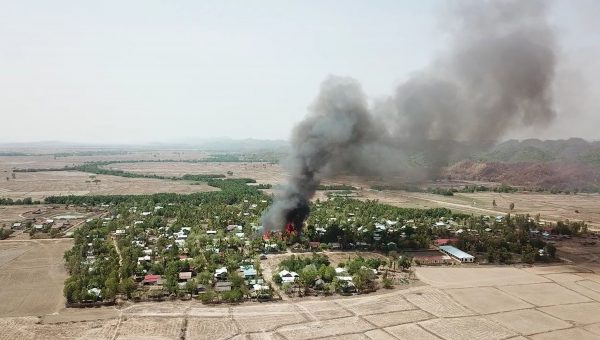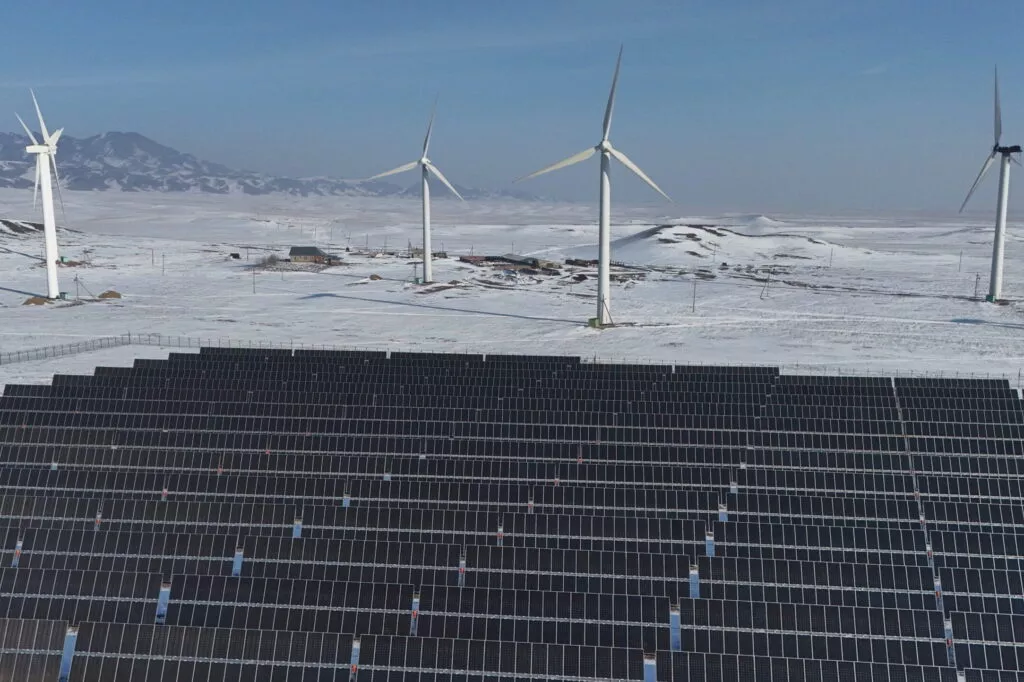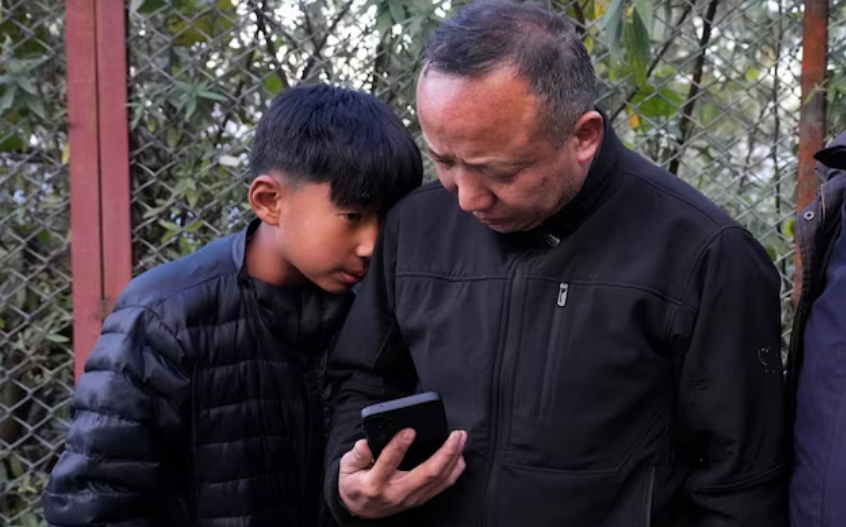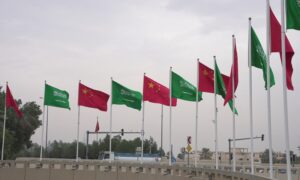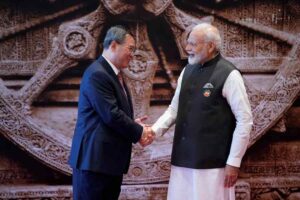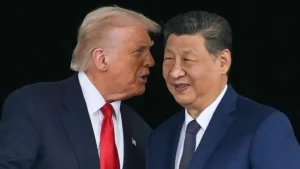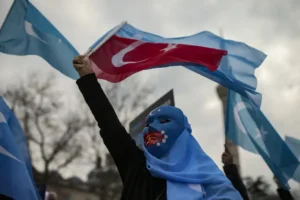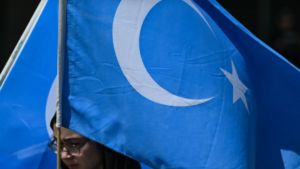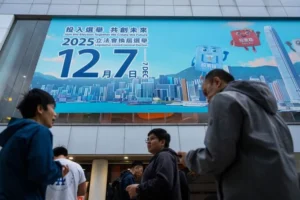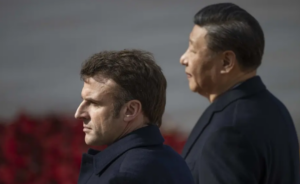After Myanmar’s Military Coup, Arakan Army Accelerates Implementation of the ‘Way of Rakhita’
Despite its support for the national protest movement, various factors have contributed to the armed group’s relative silence since the coup.
On March 11, 39 days after Myanmar’s military seized power from the civilian government, it removed a terrorist designation from the Arakan Army (AA), an ethnic armed organization in the country’s westernmost Rakhine State, with which it had been engaged in violent conflict for most of the past two years. While many ethnic Rakhine people welcomed the step, many from the Bamar majority accused the AA of collaborating with the junta and blamed the Rakhine people. This response highlights a longstanding dissonance between the realities of ethnic nationalities living in areas affected by armed conflict along the country’s borders, and the Bamar ethnic majority, largely living in central areas.
The AA is one of many ethnic armed organizations fighting for self-determination and with it, equality, justice, and freedom. Analysts described fighting between the AA and the military, known as the Tatmadaw, as the fiercest Myanmar had seen in decades. In the past two years, more than 230,000 civilians were displaced, while nearly 1,000 were seriously injured or killed by artillery shelling, gunshots, and landmine explosions, including more than 170 children.
The situation worsened throughout most of 2020. In March, the National League for Democracy (NLD) government led by Aung San Suu Kyi designated the AA a terrorist organization, and in August, excluded it from national peace talks. The NLD government also maintained the world’s longest internet shutdown, affecting more than 1 million people in Rakhine and Chin states since June 2019. While the Tatmadaw announced a unilateral ceasefire across the country beginning in May 2020 to fight the pandemic, the ceasefire excluded the AA. Tensions worsened when, weeks before the elections, a government-appointed election commission announced mass cancellations – allegedly due to the conflict – disenfranchising approximately three-fourths of Rakhine State’s eligible voters.
Among Rakhine people, the cancellations, for which the decision-making process was not made public, and which were criticized by rights groups for lacking transparency, added to the widespread negative feelings toward the NLD government and contributed to support for the AA. Many Rakhine people felt that the newly elected government wasn’t legitimate.
Analysts warned that the election cancellations in Rakhine State could worsen the fighting. Instead, the fighting paused beginning on November 12, when the AA issued a statement declaring its desire to hold elections in cancelled areas, and the Tatmadaw publicly welcomed the proposal. Several meetings were subsequently held. During a face-to-face meeting in early December, the AA and Tatmadaw discussed “ensuring a ceasefire from both sides,” according to AA spokesperson Khine Thu Kha.
Enjoying this article? Click here to subscribe for full access. Just $5 a month.
Since the coup, fighting in Rakhine State has remained quiet so far. Instead, the junta’s State Administration Council (SAC) appears to be working to gain the favor of the AA and Rakhine people. On February 2, the SAC lifted the internet shutdown, and on February 13, it released Rakhine nationalist and politician Dr. Aye Maung and Rakhine writer Wai Han Aung, two prominent political prisoners.
The junta’s divide-and-rule tactics have already caused some tensions within Rakhine society. Immediately after the coup, the junta invited the Arakan National Party, the largest Rakhine ethnic party, to take up a seat on the SAC, an offer it also extended to other ethnic parties. While many parties rejected the offer, the ANP accepted it. On February 7, 47 Rakhine civil society groups issued a joint statement urging the ANP to reverse its decision.
Diplomat Brief Weekly Newsletter N Get briefed on the story of the week, and developing stories to watch across the Asia-Pacific. Get the Newsletter
The Rakhine public was a bit late to speak out against the military’s brutal violence against protesters compared with civil society in other parts of the country, but on March 21, 77 Rakhine State-based civil society groups released a statement urging junta forces to stop cracking down on protesters with deadly force and to release all people detained since the coup. Two days later, the AA’s spokesperson told Reuters, “It is a great sadness that innocent people are being shot and killed all over Myanmar,” and that the AA was “together … with the people.”
On March 30, the Three Brotherhood Alliance of the AA, Myanmar National Democratic Alliance Army (MNDAA), and the Ta’ang National Liberation Army (TNLA) released a statement warning that if the Tatmadaw didn’t immediately stop cracking down on peaceful protesters or address the political solutions demanded by the public, the alliance would “support and cooperate with our oppressed brethren and multi-ethnic people who are waging the Myanmar Spring Revolution in self-defense against the Myanmar Army.” The alliance jointly attacked a police station in Shan State’s Lashio Township on April 10, killing several police officers. The attack came the day after junta forces fired rifle grenades on protesters in the central city of Bago, leaving at least 82 people dead.
Some analysts have questioned the AA’s initial silence after the coup, and whether it might intend to negotiate with the SAC in order to seek more territory or other concessions in Rakhine State. These questions, however, overlook and oversimplify the situation on the ground. Although the AA was publicly silent for nearly two months after the coup, Rakhine sources in Kachin State told me that even before the AA spoke out, its troops were already attacking the Tatmadaw in collaboration with its allies in the north, including the Kachin Independence Army.
Ambitions to achieve an “Arakan Dream 2020” should be factored into analysis of the AA’s current approach. The AA might now be working on its own to achieve this objective, building upon its efforts of the past two years. A concept that emerged in early 2017, the Arakan Dream includes the establishment of a Rakhine People’s Authority to administer Rakhine State. During an April 2020 speech, AA Commander-in-Chief Twan Mrat Naing also spoke of the concept of the Way of Rakhita, which he described as “the struggle for national liberation and the restoration of Arakan’s sovereignty to the people of Arakan.”
During the conflict over the past two years, dozens of village administrators in northern Rakhine have resigned, allegedly due to fear of arrest by the Tatmadaw. One local administrator who resigned in March 2019 told me during a phone call on March 27 of this year that “due to preferring an AA administration, we decided to resign and support the AA administration at the same time.”
In December 2019, Twan Mrat Naing reaffirmed his plans to establish a People’s Authority, and also said the AA would start collecting taxes from the operators of large-scale projects in 2020, in areas of Rakhine and Chin States under its control. Local residents told me the AA also began collecting taxes from local businesses in early 2020, and by the end of the year, was collecting taxes systematically. Local residents and administrators also told me that in early November 2020, the AA introduced a temporary regional administrative law in some parts of Rakhine State, which designated civilian village administrators as the chiefs of its administration department. A village administrator in Mrauk-U Township told me on March 16 that the AA is now administering most of Rakhine State and implementing its own rule of law.
On April 11, the 12th anniversary of the formation of the AA, Twan Mrat Naing wrote in a statement that the AA was working “as fast as we can. We will help the people for their desired political demands, but we don’t want the CDM [civil disobedience movement] and street protests in Rakhine State. We have a ‘way of Rakhita.’ We have a clear political objective.”
He also said that while in the AA’s “early revolutionary period,” it “worked mainly on mobilization and war affairs for our political objectives,” but that it is now “implementing a governance mechanism with strong institutions for public administrative affairs including administration, judiciary and public security.”
Enjoying this article? Click here to subscribe for full access. Just $5 a month.
Another possible reason contributing to the AA’s initial silence after the coup is that it may have been expecting the release of more than 600 political prisoners, including the sister, brother-in-law, and brother of AA chief Twan Mrat Naing, charged under the Counter-Terrorism Law during the NLD’s term.
While some people in Rakhine State have joined the national protest movement since the coup, there have been relatively fewer protests. In my view, having been the victims of years of military-perpetrated human rights abuses and experienced relatively few benefits under the NLD government, conflict-affected minorities including the Rakhine have many reasons to be more hesitant to jump into the national resistance movement against the Tatmadaw.
For one, tens of thousands of people displaced by civil war over the past two years remain in camps, where humanitarian assistance is dwindling and their future is uncertain. The junta’s state-level Administration Council announced on February 10 that it planned to facilitate the return of internally displaced people (IDPs) in Rakhine State. The AA spokesperson told local media on March 31, however, that “IDPs are currently not ready to return to their villages.” A major concern is ongoing landmine risks: Since the coup, at least 10 people have been injured or killed by landmine blasts, including eight children.
Among the IDPs encouraged to return were more than 3,300 from Mrauk-U township’s Tain Nyo camp, which burned down on March 17, destroying more than 600 shelters. Although the junta did not rebuild the camp, the IDPs haven’t yet returned to their villages due to fear of landmines or renewed conflict and the fact that many of their original homes were destroyed. Instead, charity groups are building them new shelters in the camp.
In recent weeks, the Tatmadaw has been moving troops to Rakhine State, according to reports by Yangon-based Khit Thit media. Many residents of Rakhine State and especially its northern townships are growing increasingly worried about the possibility of renewed intensive fighting in the region. Even though many Rakhine people support the national protest movement’s calls for the formation of a National Unity Government and a Federal Army to defeat the junta, in the current situation, Rakhine people are considering first of all how best to ensure their own survival.
This article was written with support from freelance journalist Emily Fishbein.
